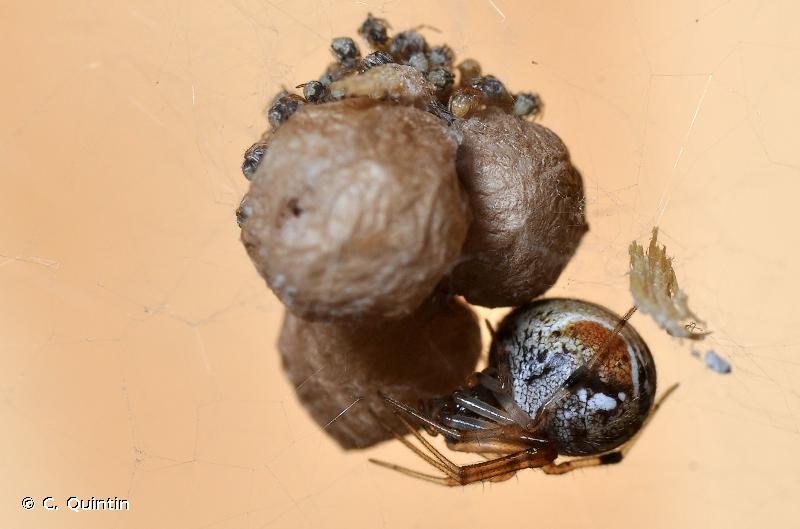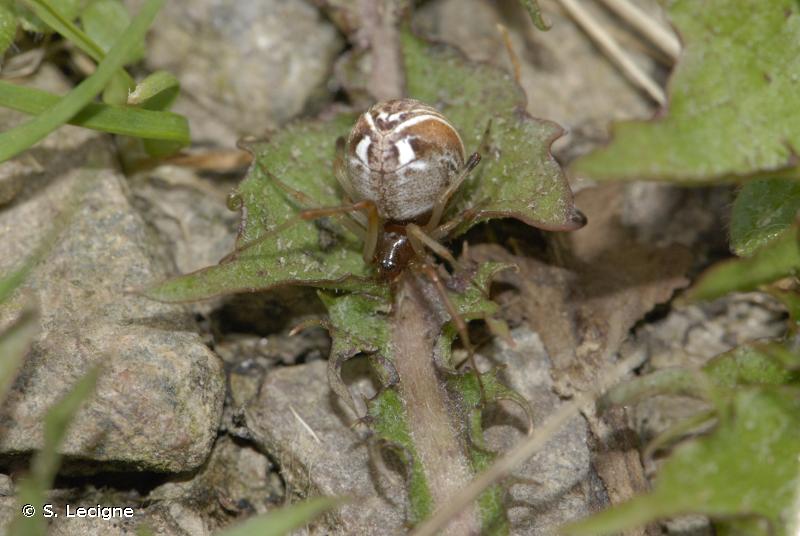
cd_nom

| Author : C. Quintin |
 |
To get the picture, please visit:
Christophe Quintin
email : inpn@mnhn.fr
Despite the Creative Commons license, please inform the author of the use which will be made of his photo

| Author : G. Bourderionnet / INPN |
 |
To get the picture, please visit:
Guy Bourderionnet
inpn@mnhn.fr
Despite the Creative Commons license, please inform the author of the use which will be made of his photo

| Author : S. Lecigne |
 |
To get the picture, please visit:
Sylvain Lecigne
inpn@mnhn.fr
Despite the Creative Commons license, please inform the author of the use which will be made of his photo

| Author : G. Bourderionnet / INPN |
 |
To get the picture, please visit:
Guy Bourderionnet
inpn@mnhn.fr
Despite the Creative Commons license, please inform the author of the use which will be made of his photo
Distribution mondiale
toute l'Europe
Caractères distinctifs, espèces
Taille - femelle : 3-6 mm, mâle : 3-5 mm.
Le genre présente un abdomen très élevé vu de profil, avec les filières orientées à angle droit par rapport au pédicule. L'espèce est très bariolée, de blanc, noir, rouge, orangé avec, sur le dos de l'abdomen, plusieurs bandes blanches formant un croissant (lunatus) courbé vers l'arrière, d'où son nom. L'observation des pièces génitales permet de confirmer l'identification.
Milieux colonisés
L'espèce colonise les milieux boisés, les landes hautes, mais aussi les jardins ou les clôtures.
Chasse
L'espèce tisse dans la végétation, en hauteur, jusqu'à environ 2 m au dessus du sol, une toile large et haute constituée de fils entrecroisés, souvent entre une branche basse et une tige. L'araignée se tient le jour, suspendue, les pattes regroupées contre son corps. Des déchets végétaux, tombés dans la toile, sont regroupés et reliés pour former, au centre de la toile, une retraite non compacte dans laquelle l'araignée se tient. Des fils parallèles à extrémité collante partent de la toile et s'ancrent sur le rameau. Les proies sont autant des insectes se déplaçant sur la tige, qui se font retenir par les fils collants, que des insectes volants interceptés par les fils entrecroisés.
Développement, cycle
Les adultes apparaissent en mai, les mâles sont observés jusqu'en juillet, les femelles jusqu'en septembre. Le cycle est annuel.
La femelle produit chaque saison, à partir de mai-juin, plusieurs cocons sphériques, entourés de soie parcheminée jaunâtre. Les pontes comptent un peu moins d'une centaine d'œufs, les jeunes sortent au bout de quelques semaines puis se dispersent. Ils passent l'hiver dans la végétation.
A. Canard(Université de Rennes/Service du Patrimoine Naturel, MNHN),2014
Continental
Metropolitan France
Overseas
Marine
Metropolitan France
Overseas
The map presents a summary at the 10 x 10 km grid of the observation data for the species transmitted to the SINP. These data have been subjected to validation filters.
The map presents a reference distribution layer of the species at the scale of departments and marine sectors. The presence and absence data were established by expertise within a network of partners. This reference distribution is used in the validation process of the SINP data at the INPN level.
Corresponds to a report on the basis of at least one observation proved within a period of 10 years (20 years for little-known invertebrates) preceding the year and no presumption of extinction since obtaining the last data nor doubt on reproductive and implemented nature of this population. For migratory species, the presence indicated concerns areas of reproduction.
This status is based on one or more of the following criteria:
This point covers the absence, more difficult by nature to demonstrate than presence. This status is based on one or more of the following criteria:
This status must be assigned to a department in which the presence of the species is casual.
Particular case of absence due to a proven extinction less than a half century ago (older disappearances are treated as "no probable or definite").
In the state of knowledge, we can not comment on the presence or absence in the current department. This is the default status when not comprised in one of the previous categories or whenever there is doubt.
The map shows the global distribution of the species based on GBIF data (Global Biodiversity Information Facility).
